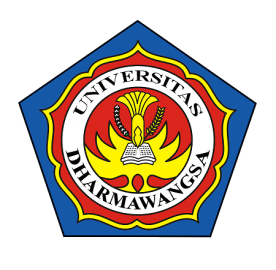Implementasi Sistem Pelaporan Kerusakan Lab Komputer Berbasis QR Code dengan Pendekatan Agile pada Mahasiswa
DOI:
https://doi.org/10.70340/jirsi.v4i1.179Keywords:
Digitalization, Reporting System, QR Code, Computer Laboratory, Student ResponsibilityAbstract
Computer lab facilities play a crucial role in supporting the learning process, particularly in the fields of engineering and technology. However, the manual reporting system for facility damages at the Computer Engineering Department, Politeknik Negeri Sriwijaya, is often inefficient and poorly documented. This study aims to analyze the impact of implementing a digital reporting system using QR Code technology on students' understanding and responsibility in maintaining lab facilities. The research employed the Agile Software Development method, encompassing five stages: requirements, design, development, testing, and deployment. Data were collected through interviews, literature reviews, as well as pre-test and post-test surveys using a Likert scale questionnaire. The results revealed a significant improvement in reporting experience (96.4%) and awareness of facility maintenance (92.8%) following the system's implementation. The system effectively facilitated real-time reporting of facility conditions by students and enhanced the efficiency of damage handling by technicians. Challenges, such as data input errors and QR Code sticker distribution, were addressed with corrective measures. This research contributes to the sustainable management of educational facilities and recommends further refinement to optimize the system.
Downloads
References
T. Qurrahman and Y. Yahfizham, “Sistem Informasi Manajemen Proyek Pengolahan Data Aset Laboratorium Komputer Berbasis Web,” Router : Jurnal Teknik Informatika dan Terapan, vol. 2, no. 2, pp. 128–137, Jun. 2024, doi: 10.62951/router.v2i2.80.
D. Junika Putra, “Rancang Bangun Sistem Informasi Manajemen dan Monitoring Aset IT Laboratorium Komputer Berbasis Web,” Journal of Informatics, Information System, and Artificial Intelligence, vol. 3, no. 1, pp. 1–15, 2025, doi: 10.24815/j-sign.v3i01.43291.
A. Siti Nurzanah and Y. Yun, “Analisis Pemeliharaan Fasilitas Komputer di Laboratorium Rekayasa Perangkat Lunak (RPL) dengan Pendekatan Pemeliharaan Logic Tree Analysis pada SMK Sangkuriang 1 Cimahi,” Portofolio: Jurnal Ekonomi, Bisnis, Manajemen dan Akuntansi, vol. 20, no. 2, pp. 35–54, 2023.
S. N. Laila and M. F. Azima, “Sistem Pelaporan, Penanganan dan Monitoring Kerusakan Laboratorium Komputer pada Institut Informatika dan Bisnis Darmajaya,” JURNAL TEKNIKA, vol. 17, no. 1, pp. 21–34, May 2023, doi: https://doi.org/10.5281/zenodo.7927622.
R. Afriansyah, “Sistem Informasi Manajemen Aset Politeknik Manufaktur Negeri Bangka Belitung,” Jurnal TeIKa, vol. 12, no. 2, pp. 135–46, Oct. 2022.
S. Elaskari, M. Imran, A. Elaskri, and A. Almasoudi, “Using barcode to track student attendance and assets in higher education institutions,” in Procedia Computer Science, Warsaw: Elsevier B.V., Mar. 2021, pp. 226–233. doi: 10.1016/j.procs.2021.04.005.
D. Arif Nur Utomo, A. Rianto, and J. Kusanti, “Sistem Informasi Pengawasan Aset di Dinas Pendidikan Kota Surakarta untuk Meningkatkan Efisiensi dan Transparansi,” Nucleus Journal, vol. 3, no. 2, pp. 91–101, Nov. 2024, doi: 10.32492/nucleus.v3i2.3204.
S. Sepriadi, D. Akhriani, U. Islam Negeri Sultan Syarif Kasim Riau, B. Diklat Keagamaan Padang, B. Litbang dan Diklat, and K. Agama, “Pemanfaatan Logbook QR Code Berbasis Google Form Terhadap Kepuasan Penggunaan Laboratorium Pendidikan,” Integrated Lab Journal, vol. 10, no. 02, 2022.
R. Indah Melyani, Rosita, and S. Aji, “Pengembangan Sistem Informasi Penggajian Berbasis Web Menggunakan Framework Laravel dengan Metode Agile Software Development,” JASIKA (Jurnal Sistem Informasi Akuntansi), vol. 03, no. 01, pp. 31–36, Mar. 2023, doi: https://doi.org/10.31294/jasika.v3i01.2195.
S. Widiastuti, N. Hendrastuty, N. Penulis Korespondensi, and S. Widiastuti Submited, “Rancang Bangun Sistem Informasi Kepegawaian Berbasis Website Dengan Menggunakan Metode Extreme Programming Pada Kantor Kelurahan Komering Agung Kecamatan Gunung Sugih,” Jurnal Teknologi Dan Sistem Informasi, vol. 4, no. 3, pp. 291–301, Jun. 2023, doi: https://doi.org/10.33365/jtsi.v4i3.2865.
E. Rahmi, E. Yumami, and N. Hidayasari, “Analisis Metode Pengembangan Sistem Informasi Berbasis Website: Systematic Literature Review,” Remik: Riset dan E-Jurnal Manajemen Informatika Komputer, vol. 7, no. 1, pp. 821–834, Jan. 2023, doi: 10.33395/remik.v7i1.12177.
C. Andri, R. Oktaviati, and H. Wijaya, “Penerapan Jelajah Kampus Virtual dalam Meningkatkan Pengalaman Orientasi Mahasiswa Kelas Karyawan Jakarta Global University,” JTIM : Jurnal Teknologi Informasi dan Multimedia, vol. 6, no. 2, pp. 196–207, Aug. 2024, doi: 10.35746/jtim.v6i2.583.
R. Gunawan, Y. P. Wibisono, C. H. Primasari, D. Budiyanto, and M. Cininta, “Blackbox Testing on VR Gamelan Saron Using the Equivalence Partition Method,” Jurnal Buana Informatika, vol. 14, no. 1, pp. 11–19, Apr. 2023.
A. F. Sevtia, M. Taufik, and A. Doyan, “Pengembangan Media Pembelajaran Fisika Berbasis Google Sites untuk Meningkatkan Kemampuan Penguasaan Konsep dan Berpikir Kritis Peserta Didik SMA,” Jurnal Ilmiah Profesi Pendidikan, vol. 7, no. 3, pp. 1167–1173, Jul. 2022, doi: 10.29303/jipp.v7i3.743.
Downloads
Published
Issue
Section
License
Copyright (c) 2025 RM Chairil Andri, Risna Oktaviati

This work is licensed under a Creative Commons Attribution-ShareAlike 4.0 International License.









